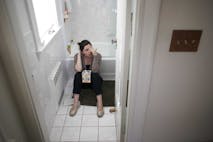
Student sues teacher who admitted to rape and abortion coercion
Cassy Cooke
·
Why Japan continues to resist pressure to legalize ‘assisted dying’
In Japan, pressure to legalize assisted suicide (or “assisted dying”) at the national level has intensified over the years, sparked by high-profile cases and anti-life narratives regarding “individual autonomy” about when to die.
Despite some regional courts’ efforts to create allowances for assisted suicide, national policy and top judicial authorities have resisted attempts to legalize it on a national scale.
It is likely that a combination of factors unique to Japan — long-standing cultural and legal traditions, alarmingly high suicide rates (as compared to the rest of the world), and bleak demographic realities (aging society and low birth rates) — have led to legitimate concerns about the ramifications of legalizing any kind of assisted dying.
Japan is experiencing pressure to legalize ‘assisted dying’ as other countries are, but many factors unique to the country have thus far prevented this.
An aging population, low birth rates, and higher suicide rates than other countries all add to resistance against legalizing assisted suicide in Japan.
Assisted dying has not found favor in higher Japanese courts.
The influences of Confucianism, Shintoism, and Buddhism also contribute to resistance against legalizing assisted dying.
Legalizing assisted dying in Japan will not benefit anyone and will not increase respect for life. Instead, efforts should be made to support palliative care and to learn and address the root causes driving suicide.
Japan is experiencing a demographic winter with a rapidly aging and declining population and record-low birth rates.
A 2024 report published by East Asia Forum elaborated on some of the reasons leading to Japan’s current population predicament:
There are several reasons for this depopulation. One is the high economic cost of having and raising children. This is a particularly acute problem for low-income households, in which the wage earners are often non-regular workers.
According to a report on household income by the Ministry of Health, Labour and Welfare, the average disposable income of a household headed by a non-regular worker is approximately 60 per cent of one headed by a regular worker. This problem may reflect a widening income gap.
Another reason is changing lifestyles. In the past, a typical family was a man and a woman who get married before they are 30 and then have children. The wife raises these children while the husband earns an income. This pattern changed as people began to pursue their own aspirations and society began to accept diversity.
Reflecting this change, the number of marriages per 1000 people declined from 10 in 1970 to 6.4 in 2000 and to 4.1 in 2022.
Consequently, Japan’s demographic crisis threatens to derail the social and economic foundations and the country’s long-term national sustainability.
Despite a downward trend in 2024, Japan’s suicide rate remains relatively high (compared to that of other countries) at 16.3 per 100,000 people in 2024, with over 20,000 suicides reported — including a disturbing number among school-age children.
Furthermore, the consequences of “karoshi” (death from overwork) and “karojisatsu” (suicide from overwork) also impose a burden on working adults in Japan, in the wake of chronic mental stress and insufficient social support systems.
Over the years, various Japanese regional courts have tried to tackle cases of voluntary euthanasia, stipulating in detail the criteria for what would make it an “acceptable” practice. However, such efforts are not legally set in stone at the national level, and national courts have issued strict sentences to physicians involved in helping patients ti due.
In March 2024, the Kyoto District Court sentenced Dr. Yoshikazu Okubo to 18 years in prison for the deaths of two people, including the killing of a patient with amyotrophic lateral sclerosis (ALS) who had requested for the doctor to end her life. The court ruled that Okubo was guilty of murdering the woman by administering a fatal amount of a drug via a gastric feeding tube, according to media outlet Asahi Shimbun.
Later in the year, in November 2024, Presiding Judge Hidenori Nagai of the Osaka High Court upheld the ruling made by the Kyoto District Court, dismissing the defense’s appeal to acquit Okubo.
In remarks cited by The Japan Times, Nagai stated that there was no proof that Okubo conducted an examination of his patient, elaborating that “there is no room to recognize (it was) socially appropriate.”
The Osaka High Court’s decision to regard Okubo as guilty of murder is reflective of how assisted dying remains judicially and politically unendorsed at the national level.
In the context of a non-Christian society like Japan, it is imperative to note that it is not the Christian belief that a human being has an immortal soul that prevents others from supporting assisted dying for individuals.
Cultural influences of Confucianism, Shintoism, and Buddhism mean that Japanese society traditionally has a strong aversion to openly discussing end-of-life issues. Shintoism and Confucian beliefs portray death as a taboo subject, further preventing direct conversations about it; such aversion to talking also translates into a wider resistance to the idea of assisted dying.
The importance of filial piety (as influenced by Confucianism), societal harmony, and family-focused decision making in Japan often mean that both patients and their families are heavily influenced not to undergo actions perceived as contradicting these values. Even if patients were to articulate their desires to stop life-prolonging treatment, their wishes may be dwarfed by societal norms regarding the preservation of life.
Many have reservations that legalizing assisted dying could expedite Japanese society’s attitudes on “giving up” on the elderly or infirm, especially considering the country’s aging population. In addition, given the country’s high suicide rates, it is unsurprising that appearing to be “suicide assistance,” even under medical pretexts, is met with suspicion and reservations.
Given Japan’s unique historical, demographic, cultural, and legal context, more efforts should be made in promoting the value and dignity of life and preventing assisted dying. Instead, the country should invest more in providing quality palliative care and broaden support for families, the elderly, and the infirm.
In light of Japan’s ongoing struggle to prevent suicide, lawmakers should increase their focus on addressing the root causes driving people to suicide and improve the quality of life for Japanese citizens, rather than go down the dark path of assisted dying.
Follow Live Action News on Facebook and Instagram for more pro-life news.
Live Action News is pro-life news and commentary from a pro-life perspective.
Contact editor@liveaction.org for questions, corrections, or if you are seeking permission to reprint any Live Action News content.
Guest Articles: To submit a guest article to Live Action News, email editor@liveaction.org with an attached Word document of 800-1000 words. Please also attach any photos relevant to your submission if applicable. If your submission is accepted for publication, you will be notified within three weeks. Guest articles are not compensated (see our Open License Agreement). Thank you for your interest in Live Action News!

Cassy Cooke
·
International
Angeline Tan
·
Analysis
Cassy Cooke
·
Analysis
Cassy Cooke
·
Analysis
Kelli Keane
·
Analysis
Bridget Sielicki
·
International
Angeline Tan
·
International
Angeline Tan
·
Activism
Angeline Tan
·
International
Angeline Tan
·
International
Angeline Tan
·